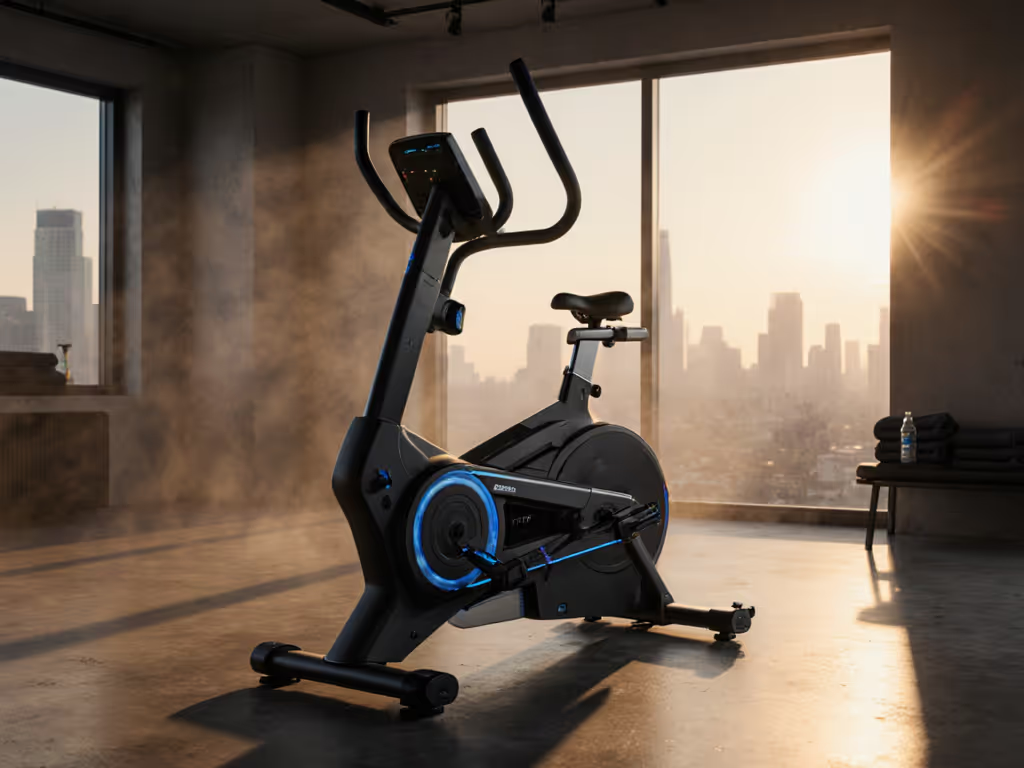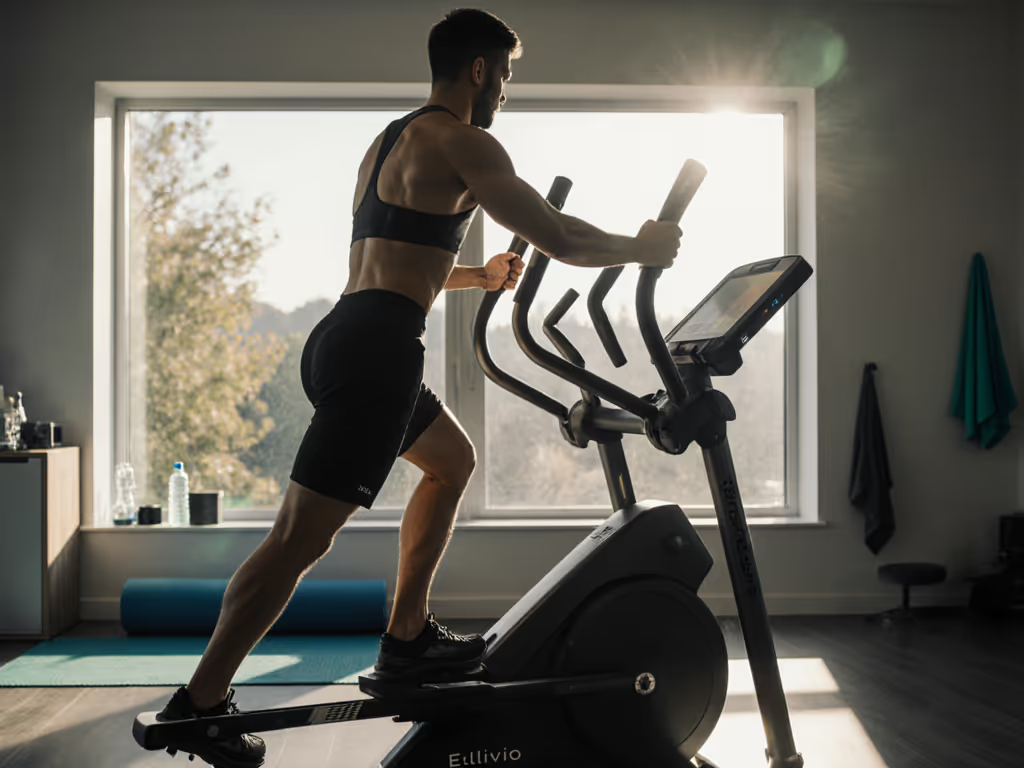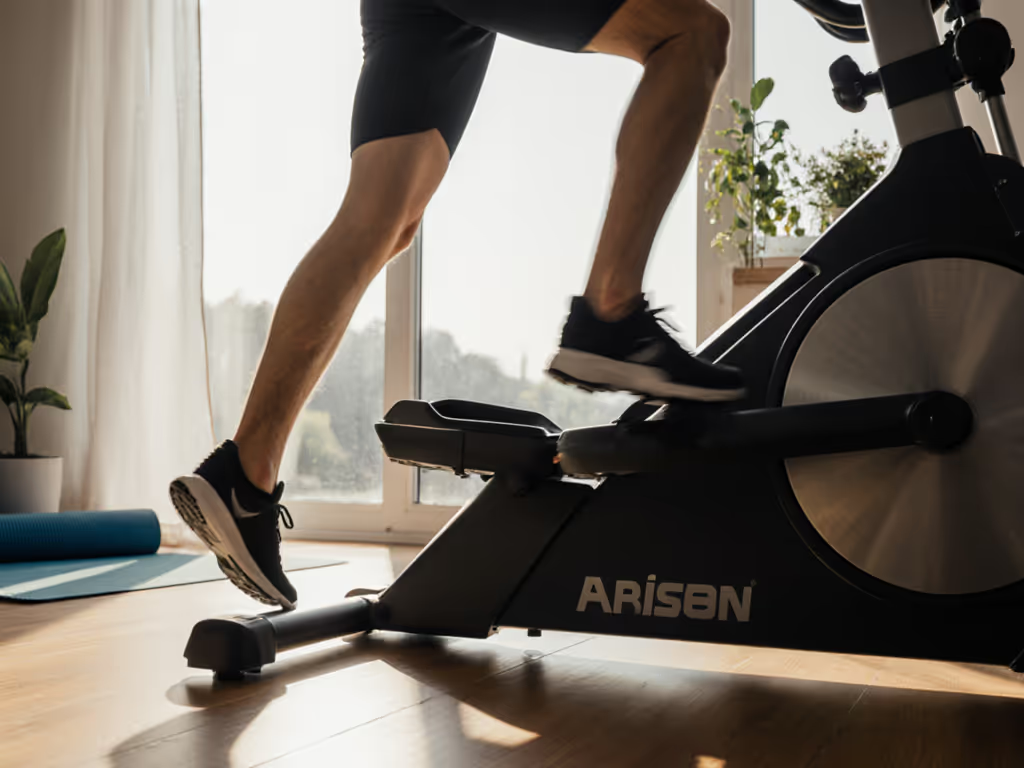
Home Elliptical Blood Sugar Management for Diabetes
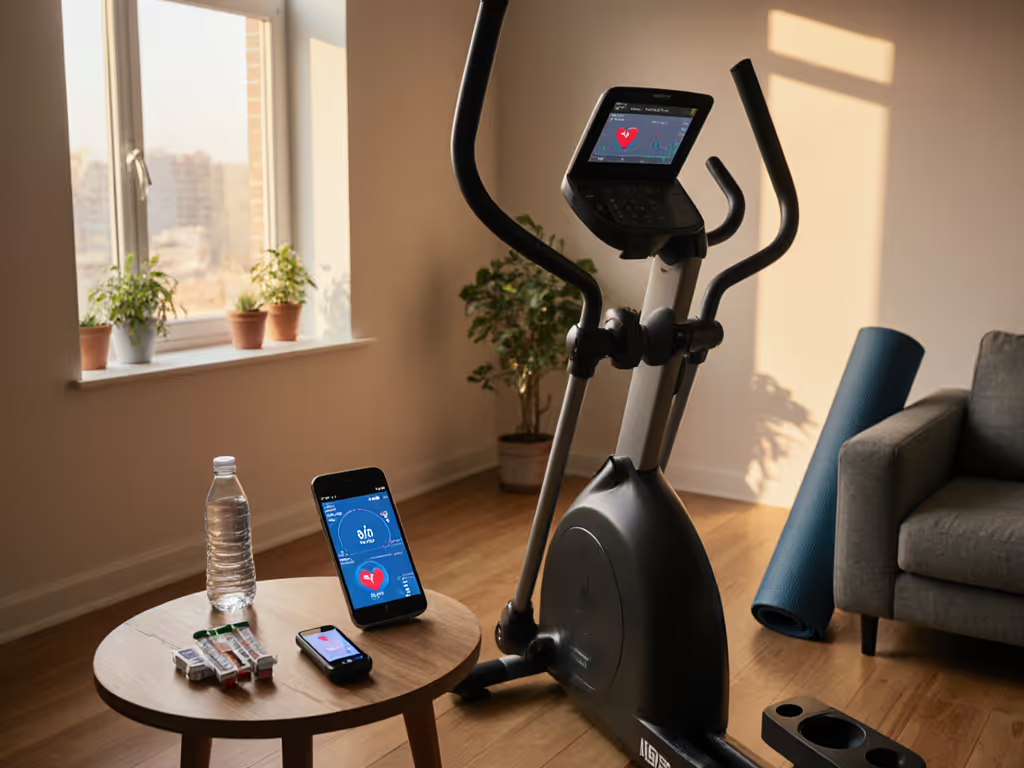
If you're navigating diabetes management at home, an elliptical for home use could be your most strategic investment, not just for cardio, but for precise blood sugar management exercise. As someone who tests connectivity protocols and verifies sensor accuracy daily, I've seen how seamless data flow transforms inconsistent efforts into sustainable progress. Remember: open data equals freedom; closed ecosystems limit your progress. Let's explore how to harness this machine for stable glucose, validated by repeatable intervals and real-world sync tests.
Why choose low-impact cardio like ellipticals for diabetes?
Ellipticals distribute weight across both lower and upper bodies, minimizing joint stress while maximizing glucose uptake. To protect your joints and move efficiently, follow our elliptical form guide. Research confirms this: a 12-week elliptical HIIT study showed significant reductions in fasting blood glucose and waist circumference for pre- and type 2 diabetes patients. The magic lies in how exercise lowers blood sugar: muscle contractions pull glucose from your bloodstream without needing extra insulin. This dual action (immediate glucose clearance + long-term insulin sensitivity) makes ellipticals ideal for daily use, especially if you have knee or hip concerns.
Critical insight: A single session can lower blood sugar for up to 24 hours. Consistency turns this into lasting metabolic resilience.
How do I avoid blood sugar crashes during elliptical workouts?
Hypoglycemia mid-workout is a legitimate fear, especially if you're insulin-dependent. My protocol: test sync before sweat to catch red flags. Before starting, check your glucose. For compatible training apps and content ecosystems, compare iFIT vs Peloton for ellipticals. If it's below 100 mg/dL, eat 15g of fast-acting carbs (like glucose tablets). During exercise:
- Keep a glucose meter within arm's reach (not buried in a bag)
- Use HR monitors that broadcast standard BLE FTMS. This syncs real-time heart rate to your phone or watch, signaling if exertion exceeds your current glucose capacity
- Never skip pre-workout checks. I once lost a week of intervals to a console that hid exports behind a subscription. Switching to open-protocol hardware fixed it instantly, proof that compatibility isn't optional.

What's the ideal elliptical workout for glucose control?
Forget extreme protocols. Diabetes exercise protocols should prioritize sustainability over intensity:
- Beginners: 10-minute sessions, 3x/day at conversational pace (RPE 3-4). Track pre/post glucose to learn your body's response.
- Intermediate: 20-minute steady-state at 60-70% max heart rate. Test sync before sweat to ensure cadence/resistance logs align with your health app.
- Advanced: 15-minute HIIT (1:2 work:rest ratio). Studies show elliptical HIIT improves VO2max and glucose faster than moderate cardio, but only if you monitor data drift. If your machine's resistance curve lags behind app signals, you're guessing effort levels.
Key nuance: Pair workouts with 30g protein post-exercise to sustain glucose stability. This isn't medical advice, it's metabolic science observed in repeatable intervals.
Does my elliptical need special glucose monitoring features?
No. Avoid gimmicks like "diabetes modes" that lock data behind subscriptions. What actually matters:
- Open protocols: BLE FTMS or ANT+ support ensures metrics (cadence, resistance, HR) sync to Apple Health, Google Fit, or Strava without mandatory fees.
- Accuracy: Test stride sensors against a manual count. If cadence drifts by >5 RPM above 90 RPM, the machine's data is unreliable for glucose correlation.
- Subscription-free logging: Your baseline workout metrics (time, distance, calories) should export via CSV or sync to free apps. To make these numbers actionable for glucose control, use our elliptical metrics guide. If exports require a $40/month fee, you're buying a data prison.
Can I trust my elliptical's heart rate readings for safety?
Only if you validate them. Chest straps (like Polar H10) remain the gold standard for glucose monitoring elliptical sessions. Wrist-based readings on machine handles often lag during high-cadence intervals, which is dangerous when hypoglycemia strikes. My test:
- Warm up 5 minutes
- Sprint 30 seconds at max effort
- Compare handlebar HR to a chest strap immediately post-sprint If readings differ by >15 BPM, rely on external sensors. This isn't about specs. It's about actionable data.
How do I build a habit that actually lowers A1c?
Start smaller than you think. My clients see the best blood sugar management exercise results with:
- Consistency over duration: 10 minutes daily > 60 minutes weekly.
- Glucose logging discipline: Note pre/post readings in your phone's health app immediately after stepping off.
- Tech that gets out of your way: If connecting your elliptical to a watch takes 4+ steps, you'll skip it. Prioritize machines that pair in <15 seconds via open standards.
When your metrics flow freely between devices, motivation follows. That flipped console taught me: compatibility is a feature you must test. Because losing data means losing progress, something no diabetic can afford.
Your next step: Own your data, own your health
Effective elliptical workout for diabetics isn't about the machine, it's about creating a frictionless loop between effort and insight. Before buying, verify: Does it broadcast standard protocols? Can you export data without a subscription? For a step-by-step checklist of features and pitfalls, see our first-time elliptical buyer's guide. Will metrics sync to your ecosystem? Test sync before sweat to ensure every interval counts toward stable glucose. For deeper validation, explore CDC's exercise guidelines for diabetes or peer-reviewed studies on HIIT and metabolic markers. Your blood sugar and your peace of mind depend on it.
Related Articles

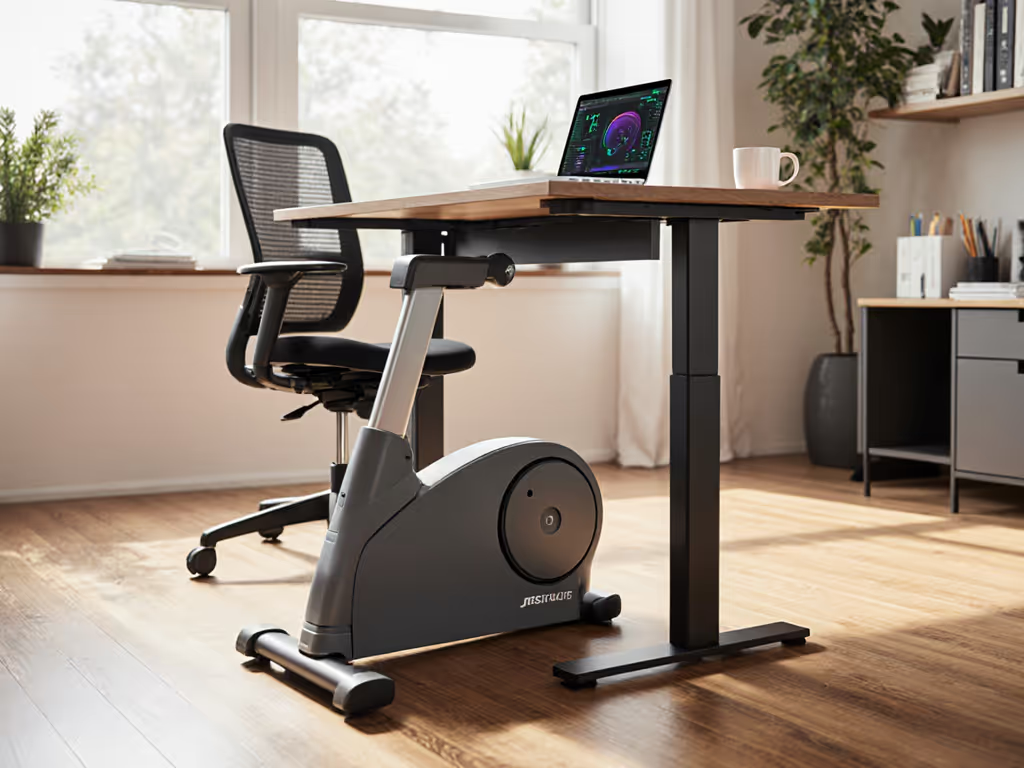
Under Desk Elliptical Trainer: Real Quiet for Work
Choose a truly quiet under-desk elliptical by prioritizing a metal-reinforced, 25+ lb base, sealed bearings, and serviceable drivetrains over decibel claims. Use the fit, connectivity, and warranty checklists to avoid noise, app lock-ins, and higher lifetime costs.
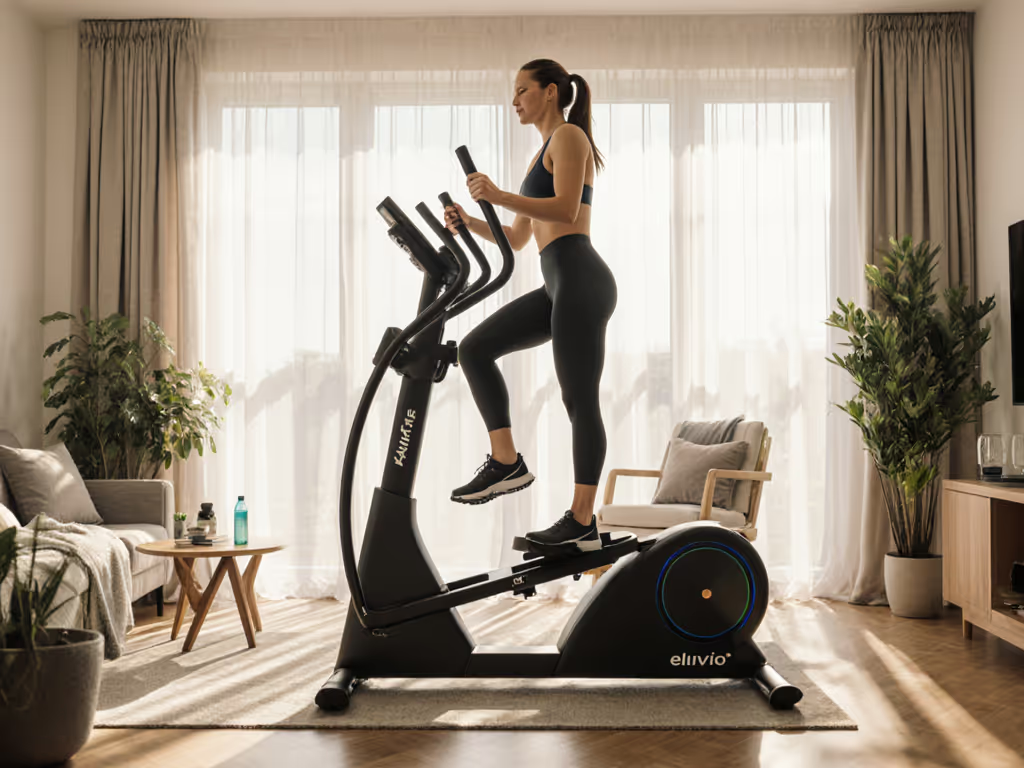
Elliptical for Home Use: Pain-Free Cardio Workout Results
Make a home elliptical a pain-free, long-term investment by prioritizing proper fit, durability, and total cost over flashy specs. Learn the key metrics (stride length, Q-factor, step-up height), subscription pitfalls, and routine tweaks that protect joints and keep workouts consistent.
